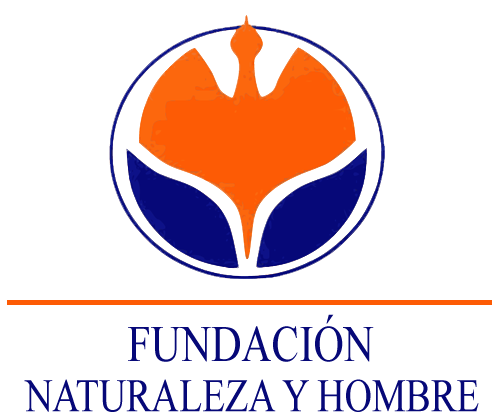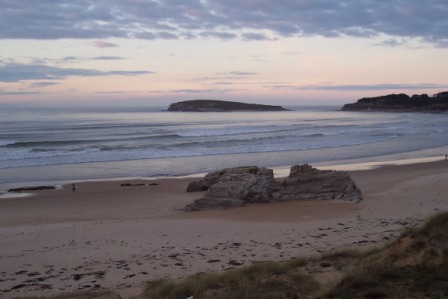- LIFE Miera
- LIFE en acción
- Recursos
- Proyectos LIFE+
- Trabajo en red
- English version
- Contacto
This SAC located in the coastal strip presents three differentiated ecological units. The mouth of the river Miera in the Bay of Santander, through the Ria de Cubas; The El Puntal-Somo-Loredo dune system; And the islands of Santa Marina and Mouro.
The central element of this SAC is the extensive dune system that extends from Loredo to Punta Rabiosa for more than 4 kilometers. This system is in constant evolution, dependent on the marine dynamics and the sedimentary contributions coming from the river Miera and the Bay of Santander.
Thus, the eastern part of the system, near Loredo, is undergoing erosive processes with a progressive disappearance of the dunes of this area. While in the central zone, in the surroundings of Somo, there is an erosion-sedimentation equilibrium. The western end is characterized by a predominance of sedimentation, which causes a constant growth of Punta Rabiosa in a westerly direction, penetrating more and more in the Bay of Santander.
In addition, the estuary of the Miera has extensive intertidal zones, occupied by sandbanks and muds on which halophilous scrubs develop, with a succession of plant associations conditioned by the degree of marine influence, all of them of notable ecological importance.
The habitats that occupy the largest surface are all shallow areas covered by water, that is, estuaries and large coves and shallow bays. On its banks, different halophytic formations appear, such as annual pioneer vegetation with Salicornia and other species of muddy or sandy areas, Atlantic saline grasslands, Mediterranean halophilic and thermo-Atlantic shrublands. More inland, the formation of dry Atlantic coastal heathers of Erica vagans should be highlighted.
In the dune areas it is possible to distinguish three types of formations: mobile dunes with reeds (white dunes), fixed coastal dunes with herbaceous vegetation (gray dunes) and fixed coastal dunes.
In this area, there are fauna, lesser horseshoe bat and greater horseshoe bat, common bent-wing bat, greater mouse-eared bat, Iberian emerald lizard, Atlantic salmon, Quimper snail, and insects, southern damselfly and stag beetle. In addition to the Macaronesian relict fern of the Tertiary Woodwardia radicans, of Macaronesic, North African and Northern Iberian distribution.
OFICINAS CENTRALES FNYH
Dirección: Av. De España Nº 25 Entlo, 39610 El Astillero Cantabria
Tlf: 942 55 91 19 / 679181483
fundacion@fnyh.org
DELEGACIÓN PARA PORTUGAL
Dirección: Rua do Conde de Redondo 8-5º dt 1150-115 Lisboa Tlf: (++351) 919 784 981 crc@erena.pt
CASA DE LA NATURALEZA-MARISMAS DE ALDAY
Dirección: C/ Alday (junto al parking de Valle Real), Maliaño, Cantabria
Tlf: 679 181 472
educacionambiental@fnyh.org
DELEGACIÓN PARA SUDAMÉRICA
Iguazú iguazuconservation@fnyh.org
ECOMUSEO-FLUVIARIUM DE LIÉRGANES
Dirección: C/ Camino Real, 9, 39722 Liérganes, Cantabria
Tlf: 942 52 81 96
fluviarium@fnyh.org
DELEGACIÓN PARA ÁFRICA
Tanzania fundacion@fnyh.org
VIVERO Y CENTRO ETNOBOTÁNICO EL PENDO
Dirección: 39609 Camargo, Cantabria
Tlf: 942 25 88 08
vivero@fnyh.org

ESTACIÓN BIOLÓGICA CAMPANARIOS DE AZABA
Dirección: Camino de La Alamedila, SN 37497 Espeja, Salamanca
Tlf: 923481401
campanarios@fnyh.org

